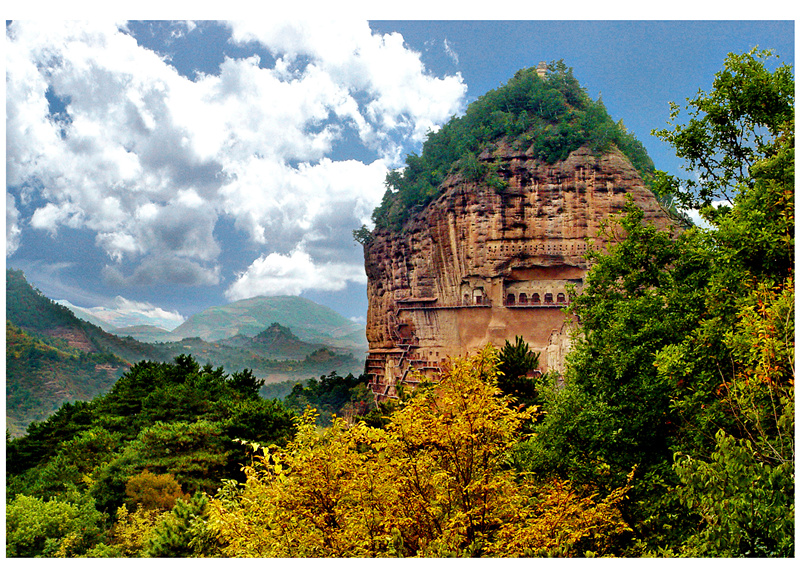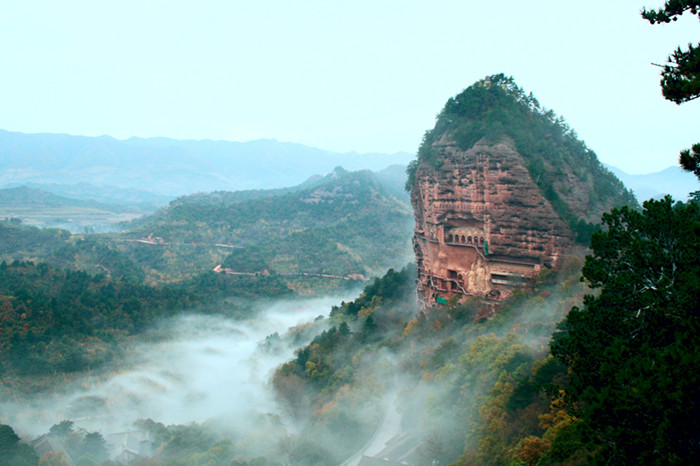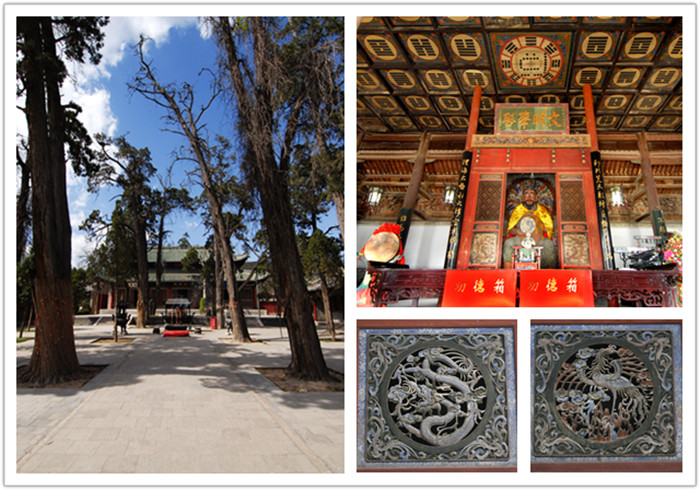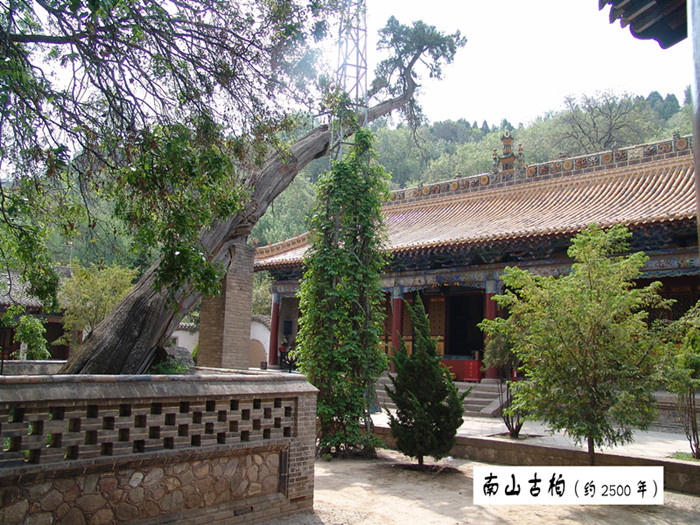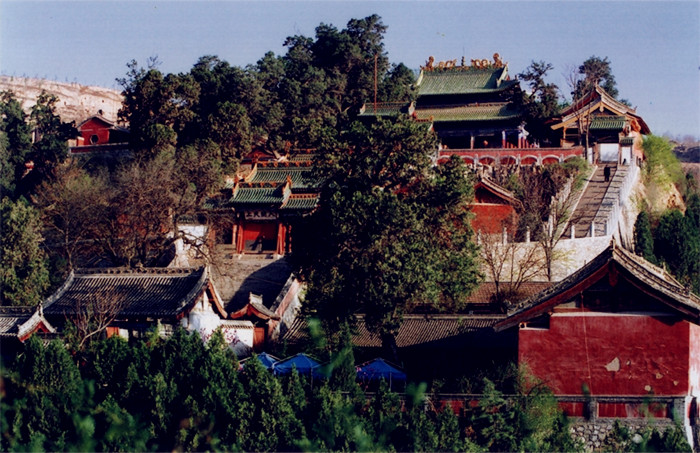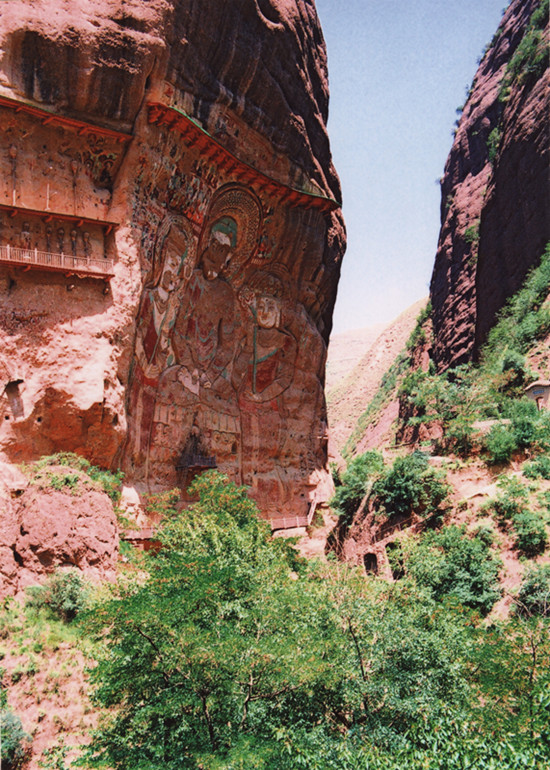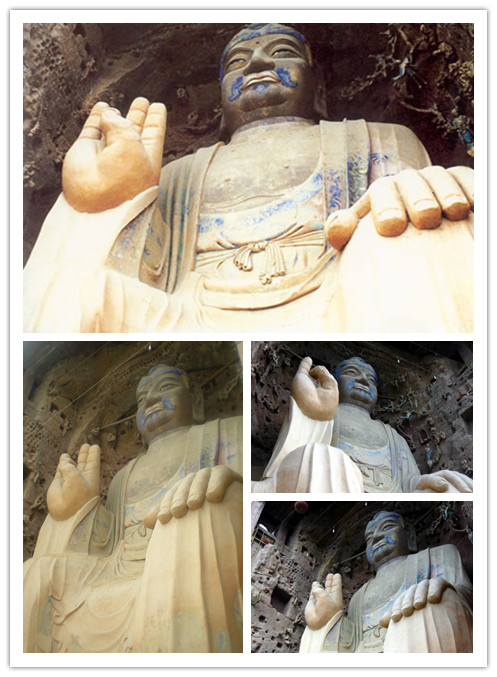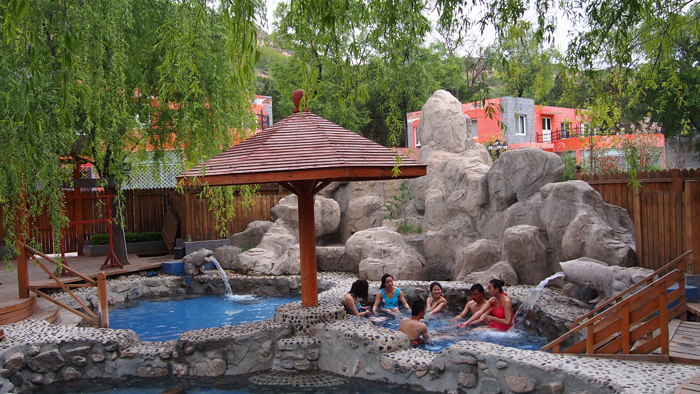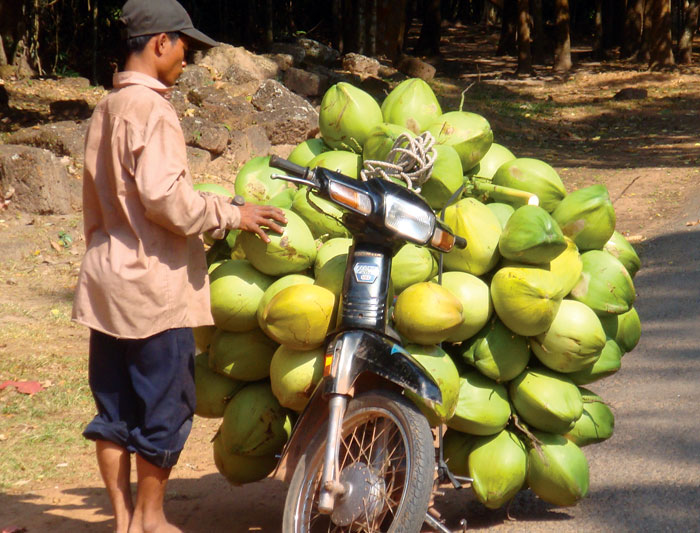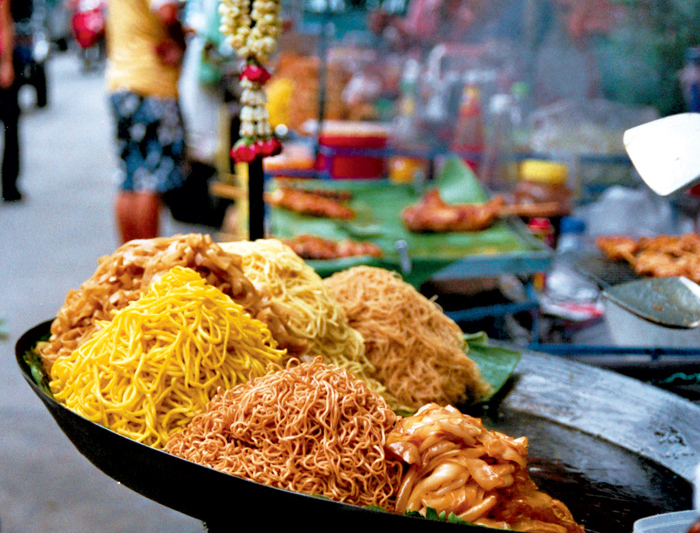Tianshui City
Tianshui lies in the southeast of Gansu Province, close to the west of the Qinling Mountains, along the upper reaches of Weihe River. It is in the west part of Qinling Mountains and beside the middle stream of Weihe River. The city, hometown of Fuxi, was called Chengji in ancient times. The name “Tianshui" comes from the legend of the “Heavenly River Infusion". It is the core city of Guanzhong—Tianshui Economic Zone—with one autonomous county (Zhangjiachuan Hui Autonomous County), two districts (Qinzhou, Maiji) and four other counties (Wushan, Gangu, Qin’an, Qingshui) under its jurisdiction. It covers a total area of 14,300 square kilometers with a population of more than 3.7 million. Tianshui is one of the most important birthplaces of Chinese civilization. The main historical cultures in the city include Fuxi (who created the Eight Diagrams) Culture, Dadiwan Tribe Culture, the early culture of the Qin State (one of the vassal states from 900-206 BC), Grottoes Artistic Culture, and Ancient War Culture during the Three Kingdoms period (AD 220-280), all of which contribute to the unique historical and cultural system of Tianshui. Tianshui City is the birthplace of Fuxi (the first of three ancient Chinese legendary emperors) as well as the cradle of Fuxi Civilization [May want to explain a bit more: What is Fuxi Civilization?], which can be traced back to 6000-7000 years ago. The place Fuxi created the Eight Diagrams is right in Guatai Mountain of the Sanyangchuan area which is 70km away from Dadiwan. Tianshui is a famous historical and cultural city, bearing a civilization of more than 8,000 years, 3,000 years of written recorded history and 2700 years of city history. Now, there are over 450 Historical and Cultural Sites protected at different levels, among which, there are 17 Historical and Cultural Sites Protected at the National Level and 45 Provincial Historical and Cultural Sites. The 7 historical streets and 143 courtyards having been listed in the protection list, cover a total area of 56.5 hectares. There are 228 trees older than 100 years in the city, and the number ranks the second only to Yangzhou City in China. The ancient cypresse planted in the Spring and Autumn Period is recognized to be [these are both passive] the Cypress King. There are many springs inside the city, such as Gan Spring, Guan Spring, Yu Spring, Mapao Spring, Beiliu Spring, Qingshui Hot Spring, Wushan Hot Spring and Jiezi Hot Spring. Tianshui is an excellent tourism city with abundant resources for tourism development. There are 228 scenic spots here, among which are 29 Level A Scenic Spots (one National 5As Scenic Spot, five National 4As Scenic Spots and one National 3As Scenic Spot), 32 travel agencies and branches, 34 star-rated hotels, 39 star-rated rural fun recreational farms, 69 star-rated toilets, 2 National Industrial and Agricultural Tourism Demonstration Sites, 2 National Forest Park, 1 National Geological Park and 8 Provincial Forest Parks. The Fuxi Temple of the Ming Dynasty and Guatai Mountain where Fuxi created the Eight Diagrams are root-seeking places for Chinese descendants to worship their ancestors. Maijishan Scenic Area is among the first list of National Scenic Areas to have been approved by the State Council, and it was rated a National 5As Tourism Attraction in 2010. Maijishan Grottoes, Daxiangshan Mountain of Gangu County, Shuiliandong Cave and Lashaosi Temple of Wushan County compose the Grottoes Art Passage at the east part of the ancient Silk Road. Tianshui has been a famous tourism city in western China, as well as a glowing pearl in the new Silk Road. In recent years, Tianshui has built the tourism image of “the Source of Chinese Civilization" to promote six excellent tourism routes and two tourism brands including “the hometown of Fuxi – a root-seeking place" and “Maijishan 5As Scenic Area". These six excellent tourism routes cover “root-seeking tourism to the hometown of Fuxi" including Fuxi Temple, Mountain Guatai, Nvwa Ancestral Temple and Dadiwan Ruins. “Tourism of the Grottoes Museums", as the second route, includes Maiji Mountain, Daxiang Mountain, Shuiliandong Cave, Lashao Temple and Matisi Temple. The third route “tourism of famous ancient towns along the Silk Road" includes Nanguo Temple, Yuquanguan Temple, Liguang Tomb and ancient residence of Hu. The fourth route “ecological leisure tourism" includes Little Longshan Mountain, Maiji National Forest Park, Xianrenya Cliff, Shimen and Qvxi. The fifth route “hotspring tourism" includes Jiezi Hotspring, Qingshui Hotspring and Wushan Hotspring. The sixth route “sightseeing tourism of modern characteristic agriculture" includes Tianshui National High-tech Agricultural Demonstration Area and Tianshui Weiye Ecological Area. Tourism industry in Tianshui has a strong momentum in constructing great scenic areas, developing broad markets and promoting quality tourism. Maiji Mountain Scenic Area (AAAAA)
Maiji Mountain Scenic Area is located about 50 km southeast of Tianshui City. Located in the eastern section of the north branch of the West Qinling Mountain range, it crosses the Wei River in the north, and is adjacent to Jialing River in the south. It consists of four grand sightseeing spots: Botanic Garden, Quxi, Fangmatan, and Jingtu Temple. And Maiji Mountain Grottoes, Immortal Cliff, Ruiying Temple, and Arhat Cliff are in neighboring regions of the area. The forest coverage reaches 76%. The scenic area has many kinds of animals and plants. The natural landscape and the culture add radiance and beauty to each other. The area has 35 tourist areas and 180 tourist sites. The Maiji Mountain Grottoes are world-famous, so the area is generally named “Maiji Mountain Scenic Area". The construction of Maiji Mountain Grottoes started in the Later Qin period (384-417 AD) of the Sixteen Kingdoms. There are pines and bamboo growing here, surrounded by the green mountains. The Maiji Mountain standing high over others, which is called “the Champion of Qin Area and Forest", is a fascinating peak in the Xiaolong Mountain on the west end of the Qinling Mountain range of China. The altitude is 1742 meters, and the height of mountain is only 142 meters. It looks like a grain stack. Because of the shape of the mountain, it is called Maiji (grain stack) Mountain. The southwest of the mountain is a steep cliff where the Maiji Mountain Grottoes were excavated. Some grottoes lie 20 to 30 meters away from the base and some extend as long as 70 to 80 meters. To have excavated thousands of caves and figures of the Buddha in such a steep cliff is very rare in Chinese grottos. It is highly praised as “Oriental Sculpture Gallery". The surrounding landscape of Maiji Mountain is very beautiful, with green cypresses and pines, wild flowers and flourishing grassland. When you surmount the peak and gaze into the distance, you will find that you are surrounded by the green mountains which are covered by thick vegetation. The distant view and the landscape nearby, including the innumerable mountains and valleys, the sea-like pine trees, mists and the clouds, intertwine and form a beautiful picture—namely “the misty rain of Maiji". Fuxi Temple (AAAA)
Fuxi Temple is located in the west of Qin Cheng district in Tianshui city, founded in AD 1347. It was firstly founded in AD 1490 and renovated in AD 1542. It was named Taihao Palace, commonly known as Renzong Temple. Fuxi Temple stands in the north facing south, which was built near the street. Its courtyards contain each by each, broad and deep. There are 10 ancient buildings in the temple including Opera Tower, Honorific Archway, Entrance Gate, Yi Gate, Xiantian Temple, Tai Chi Temple, Bell Tower, Drum Tower and the Crane Hall and 6 new constructions such as Royal Court, Stone-tablet Gallery and Exhibition Hall. Now covering an area of over 6000 square meters, there is a main north-south axis in the temple. With the main building arranged around in the main axis, its layout is precise and majestic. The temple is the only Chinese domestic Fuxi Temple with the statue of Fuxi. There were originally two ancient locust trees opposite to each other at the east and west corner inside the door of Fuxi Temple. Now only the tree at the east corner exists and its trunk is hallow. It has been identified to be planted in Tang Dynasty. Ancient cypresses spread all over the yards of Fuxi Temple, which were planted in Ming Dynasty. The original number of these cypresses was 64, symbolizing the number of Fuxi 64 hexagrams, but now only 37 still exist. The ancient cypresses are vigorous and straight, with canopies towering to the sky. The quiet and elegant environment set off the Zhouyi culture of Fuxi Temple. Every year, on the 16th day of January in lunar calendar, people in surrounding areas come to the Fuxi temple with their families to pay homage to the “Ancestor of Chinese Nation". For the whole day, the candles are very bright, the temple in a fragrant cloud of incense, and the drums and bells making out welkin sounds. What a majestic scene it is! Nanguo Temple (AAAA )
Nanguo Temple lies in the mountain, about 2km south of Tianshui City. It covers an area of 5.7 hectares. As one of the eight notable scenic attractions of Tianshui, there are leafy trees, towering cypresses. The seasonal blossoms and singing birds enliven the picturesque scenery. As a major temple in eastern Gansu Province, it has been recognized as a major historical and cultural site under provincial-level protection and a patriotism education base. Nanguo Temple enjoys an inheritable history. It was called Miaosheng Academy in the Song Dynasty and given a name of Zen Forest Temple by Emperor Qianlong of the Qing dynasty. With a history of over 1600 years, Nanguo Temple has a destination of sightseeing for poets and literary men in different dynasties. As early as in the Tang dynasty, its construction was already in considerable size. Inside the temple are such architectural attractions as the Hall of the Heavenly Kings, Bell and Drum Tower, Zen Forest Courtyard, Hall of Sage Guanyu, Hall of Poet Dufu and Beiliu Spring Pond. There are locust trees of the Tang dynasty and Han dynasty cypresses, with their branches reaching high into the sky. You can find here, among the relics, the poems especially dedicated to Nanguo Temple by Li Bai and Du Fu, the two renowned poets in the history of Chinese literature. There is the ancient cypress planted in the Spring and Autumn Period, regarded as the rare treasure. The cultural relics have survived many centuries, and they definitely are the treasure of Chinese nation.
Yuquanguan Temple Lies at the foot of Tianjing mountain in the northern part of Qinzhou District, Tianshui city. It is commonly called Chengbei Temple and Chongning Temple. The name of the temple originates from the jade-like spring. The verse, “The temple lies in the north of the city, where there is a jade-like spring" was made by Liang Gongbi, an instructor of Qinzhou in the Yuan dynasty. It is one of the top ten scenic attractions of Tianshui City for the reputation of “the Jade spring and the fairy cave". The layout of the temple highlights the Taoist architectural principles. Along the south-to-north axis stand the 7 major grand buildings, including the Yuhuang Hall, Sanqing Hall, Honorific Archway,etc.; Ancestral Halls, the pavilions and the stele corridors are scattered on the hills, piled earth mounts and in the mountain hollows in east, west and south around the temple premises. The architectural style not only inherited the traditional architectural art but also integrated the local architectural characters. The temple has become a common focus of experts both from home and abroad, acknowledging its uniqueness in scale and completeness. The ancient cypresses are still prospering in the temple. Of the currently 50 ancient cypresses, 21 belong to the first -class protection category. “The plaited cypress" is the most famous with its roots hanging atop the ground and branches intercrossed, resembling a girl`s plaits and thus named; it was rated as “the rarest nationwide" by experts. The Water Curtain Cave of Wushan County (AAAA )
The Water Curtain Cave of Wushan County is situated in the gorge of Zhonglou Mountain about 25km northeast of Wushan county, Tianshui city. With a height of 50 meters and a depth of 20 meters the water curtain cave is a natural rock cave. The stream flows incessantly all year around, down flowing water like a curtain, so it was named Water Curtain Cave. The scenic area includes Lashao Temple, Thousand-Buddha Temple, Xiansheng Lake, The Water Curtain Cave; it is a grottoes complex second only to the Maiji grottoes complex of Tianshui city. Both the complexes are regarded as the artistic sacred places of Buddhism along the southern route of “The Ancient Silk Road" in the upper reach of Weihe River. The Water Curtain Cave Grottoes Complex was firstly constructed in the North Zhou Dynasty and expanded and repaired through the Five Kingdom periods, the Song and Yuan dynasties. There are 7 temples and 5 platforms as well as 12 cultural relics, scattered within several kilometers. The grottoes are classified in 5 groups. Integrated with the grand natural sceneries, the water cave grottoes complex is a cultural pearl, and a worthwhile sightseeing attraction in Gansu Province. Within the scenic area stands the very rare bas-relief on precipices – Lashao Temple Buddha, known as the biggest in Asia, providing vital research evidence of the early grotto culture. Currently there are over 100 bas-relief figures, murals of more than 2000 square meters, 8 stupas, 10 inscribed steles and 1 headless mummy. The inscriptions of Lashao Temple are extremely valuable for the periodization of history as well as the research of origin and development of the art history. The Giant- Elephant Mountain in Gangu County (AAAA)
The Giant- Elephant Mountain is situated 2.5 kilometers southwest of Wenqi Mountain of Gangu County in Tianshui, Gansu Province. From the foot of the mountain to the top, the stone steps extend 1.5 kilometers. The total area takes up 42.67 hectares. Integrated with the grottoes and the ancient historical relics, this park is one of the important cultural remains in southeast Gansu Province along the Silk Road. As there is a giant bas-relief Buddha figure of Sakyamuni on the top of precipices, the name Giant Statue was given to the mountain. Zhao Puchu, the late director of Chinese Buddhism Association held the view that the name of Giant Elephant Mountain is more precise after making a thorough research on the birth, history and the related tales of Sakyamuni’s reincarnation. Since then the name is formally acknowlodged. The mountains are covered with thick cypresses and pines, and scented by lilac blossoms. There is a large cave on the cliff, the giant bas-relief Buddha figure sitting in it. On the mountain top and halfway the mountainside, pavilions are scattered in the green bushes. Painted pillars and beams are shaded by trees. Gangu Buddha figure is stone carved statue covered with clay, 23.3 meters high, 9.5 meters shoulder wide. Its head height is 5.8 m, the knee length 6 m. Its tall shape is majestic. Its cultural characteristics consist in the perfect combination of western decorative sculpture and Chinese freehand artistic sculpture. According to research, Gangu Buddha Statue could be dated back to the North Wei Dynasty. The carving and clay applying took three hundred years throughout four dynasties. Hot Spring Resort of Qingshui County (AAA)
The hot spring resort is 8km east of Qingshui County of Tianshui City, 1420 meters above sea level. In 1957, it was built with the name “Workers’ Sanatorium of Qingshui". In 2008, Gansu Haofeng Group completed the renovation and extended construction of this former Provincial Workers’ Sanatorium, costing over 100 million yuan. It is now a resort for multiple purposes, regimen relaxation, leisure, sightseeing, conference reception, or angling for fish. |
Tianshui City
December 21, 2016
VIEWED: 0
Recommended Products
see all-
Best of Vietnam & Cambodia
HKD 2130 + Book -
Cambodia & Thailand Traveller
HKD 2220 + Book
